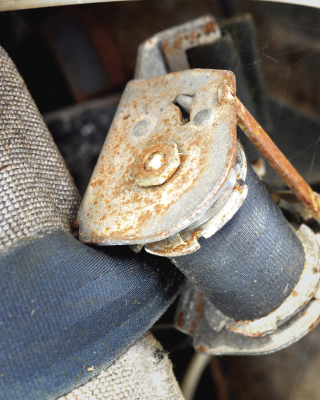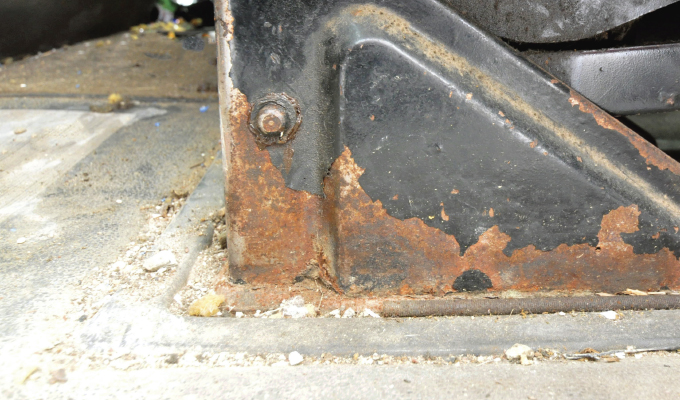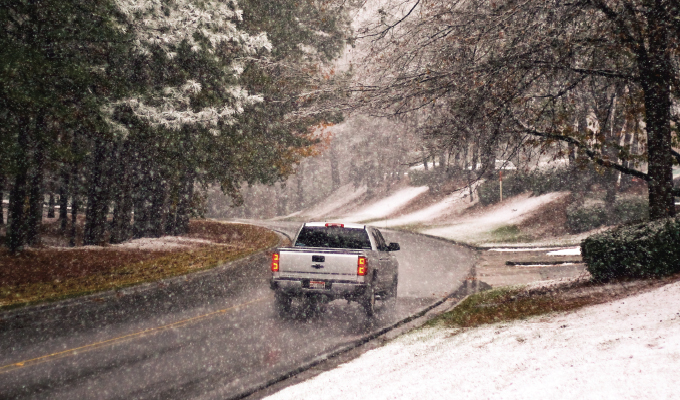The time for salting and plowing roads is just around the corner. Unfortunately there is no way to avoid the damaging chemicals used to clear roads during the winter, and these compounds wreak havoc in more ways than one.
The spray that comes off the road impacts the exterior of the truck and its equipment, while driver footwear constantly brings corrosive chemicals into the cab.
Most highway departments have switched to chloride deicers, such as calcium chloride and magnesium chloride, to keep roads passable during winter. Both chemicals are more effective than sodium chloride because they provide lower freeze points, cost less, and are less harmful to the environment. Many DOTs also mix in liquids such as sugar beet juice or vegetable oil to improve adhesion to road surfaces, and they often spray road surfaces before storms hit to get ahead of the snow and ice.
In his blog, Dave Budd, vice president of product development and marketing at Great Lake Chloride, says, “Ice melter speed of action is determined by how easily it dissolves when exposed to snow or ice to form a brine solution. This brine lowers the freezing point of water to melt additional snow and ice on contact.”
It’s easy to see why highway departments prefer calcium chloride or magnesium chloride because of their natural advantages, but these compounds still create massive corrosion issues.

INEVITABLE CORROSION
During a 2016 TMC task force meeting on cab and controls corrosion, chairman Tim Brune said, “We are seeing a lot of corrosion happening in cabs.”
Drivers constantly get in and out of their trucks and track whatever is on the ground into the cab. It’s bad enough having snow and ice combined with the deicing chemicals, but the problem is made worse because of the chemicals’ hygroscopic nature. According to the Identification and Laboratory Assessment of Best Practices to Protect DOT Equipment from the Corrosive Effect of Chemical Deicers, hygroscopic material continues to draw moisture from the air even in seemingly dry environments. As the driver’s shoes dry out, the remnants of the deicing chemicals get sucked into the truck’s HVAC system and recirculated throughout the cab, where they continue to attract moisture because of their hygroscopic nature.
Several task force attendees said that when they rolled up cab rugs on two to three-year-old trucks, the floor had almost been eaten away by corrosion. However, the floor isn’t the only thing impacted by deicing substances. Seat belt mounts and retractors can also be damaged, and the cost to replace electrical wiring and connectors can be thousands of dollars. During the task force meeting, one attendee said that corrosion had destroyed a $4,000 sensor within six months. The task force’s advice was to inspect all sealed connectors in the cab because once moisture gets in the cab, it gets in the wires.
EMPLOY FENDERS
Just as damaging is the spray off the tires, which impacts the truck’s exterior and any equipment it’s hauling. Protective fenders covering individual or tandem tires minimize the spray, meaning those winter chemicals used on roadways don’t find their way onto the back of the cab or the equipment.
But what about the fenders? Won’t they corrode?
It depends on the material. Poly fenders work best in harsh winter conditions because they don’t rust or corrode and are lighter than metal.

TRY FLOOR MATS
What about the cab’s interior? Is there any way to prevent significant interior corrosion?
K&B Transportation uses tray-style floor mats, and its president, Brock Ackerman, says the mats are an investment, not an expense.
A K&B truck typically lasts about 48 to 60 months, and Ackerman says there will be eight to 10 drivers during that time, meaning his fleet cleans the cab’s interior eight to 10 times. This would typically be a time-consuming process, thanks largely to winter chemicals, but Ackerman says the tray-style floor mats save his fleet time and money.
“We can remove the mats and take a pressure washer to them. It takes about 30 seconds,” Ackerman says.
The mat’s raised edge will contain any spills or messes—including deicing chemicals—and keep them off the floor. Rather than spend a day in the shop scrubbing and detailing the cab, the cleaning process takes seconds.
Ackerman insists K&B Transportation has saved a lot of money since installing tray-style floor mats. “Probably saved me about a thousand dollars a truck over the life of the truck,” Ackerman says.
Many fleets invest in rubber mats. Unfortunately, these mats may not do a quality job of keeping the floor clean and free of corrosive deicing chemicals. Unlike most tray-style floor mats, they are not laser fitted for a specific cab.
PROTECT YOUR FLEET
Corrosion is a formidable opponent. Old Man Winter isn’t going away, so fleets must find solutions to keep deicing chemicals from impacting their trucks’ interior and exterior.
FOR MORE INFORMATION
Find out more ways to protect fleet trucks from corrosion caused by deicing chemicals, visit www.minimizer.com.



